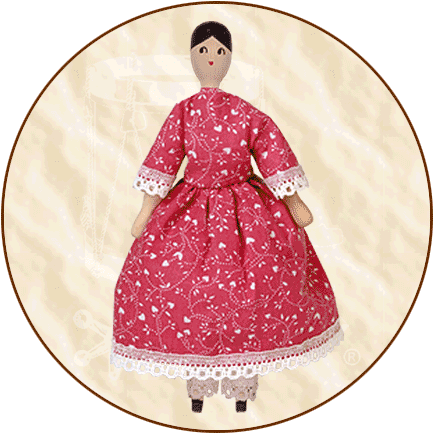.
Continued from product description on
Historical Doll Kits' Page One...
Historical
Background: Jointed dolls made from wood and clay have
been found in ancient Greek and Roman tombs. Archeologists are
not certain whether these items were children's playthings, or
whether they had religious significance. One particular doll
from ancient Rome circa 200 B.C. features jointed arms at the
shoulders and jointed legs. Other types of wooden dolls follow
the era of ancient dolls. Less than 30 primitive "stump
dolls" from 16th- and 17th-century England still exist.
Wooden "shoulder-heads" for dolls were made in many
countries around the world and feature the doll head and chest
from one piece of wood. Antique Doll World magazine reported
one early American hand-carved wooden "shoulder-head"
to have been made in Maine in 1810.
Penny wooden dolls are also known as "peg wooden dolls,"
"common wooden poppets," and "penny woodens."
They were produced in Germany beginning in 1810, were very simple,
and resembled a clothespin with simple peg joints. These dolls
were fairly durable and could be carried around by little girls
without the fear of breaking them. These dolls were readily available
in English "cent shops" for a penny. A cent shop carried
candy, cookies, small dolls, and other inexpensive toys for children,
much like the American "dime stores" that appeared
during the 1950s and 1960s. One resource notes a 2-inch high
penny wooden doll, which is a lot smaller than the 7-inch doll
sold by Historical Folk Toys. The earlier made small penny wooden
dolls would have been easily available to many children in small
quantities so they might afford a whole family of them. Of course,
inflation has hit the wooden doll market since the early 1800s,
and these dolls are no longer offered for merely a penny. Other
dolls, even as large as 11 inches, of this same type have been
made and feature round heads and carved noses.













